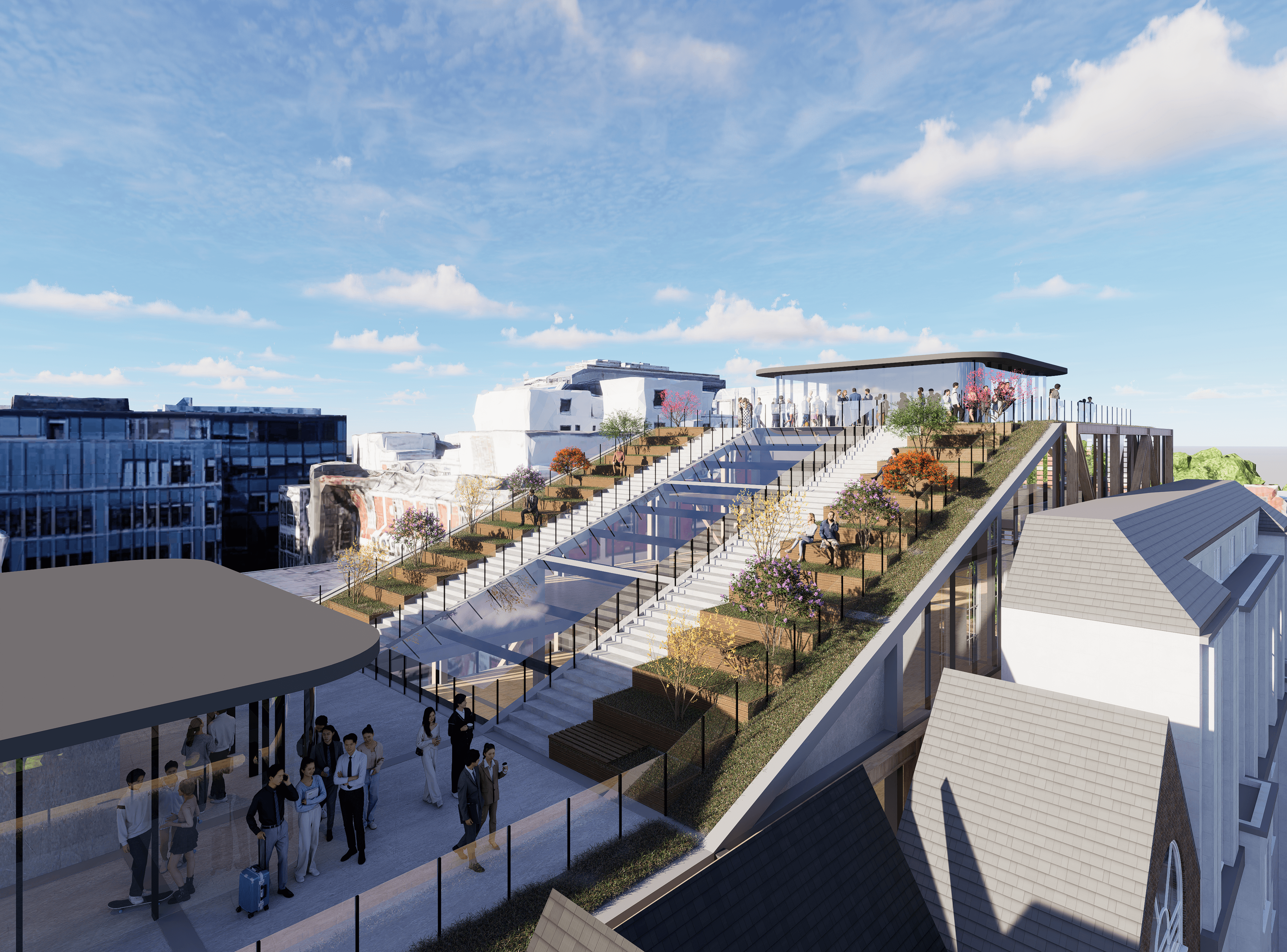Exploring 'Deep Green Retrofit' in partnership with Wates
04/2024
At Able Partners, we continuously explore innovative solutions to create sustainable, future-ready buildings. One of our latest ventures takes us to 15-23 Lincoln’s Inn Fields, a collection of five separate buildings in Central London with the potential to become a cohesive scheme. This exciting case study examines what a ‘Deep Green Retrofit’ could mean for these buildings, focusing on design, performance, and the carbon implications of various approaches.
As part of this study, we have worked closely with industry leaders Wates and Turner & Townsend to explore several retrofit options, including a “cut and carve” refurbishment, a façade retention, and a new build. Each scheme was analysed to assess its carbon impact, spatial performance, and how different materials can influence the project's sustainability.
The goal of this project is not just to enhance the existing buildings but to learn valuable lessons that can inform broader strategies for sustainable urban development. By considering the potential for retaining and upgrading the façades while integrating modern, energy-efficient design principles, we are developing solutions that meet today’s environmental standards and future-proof the building for years to come.
This exploration of ‘Deep Green Retrofit’ will continue to inform our approach to sustainable design, helping us create better, more resilient spaces that reduce environmental impact and enhance the quality of life for their occupants.

Exploring 'Deep Green Retrofit' in partnership with Wates
04/2024
At Able Partners, we continuously explore innovative solutions to create sustainable, future-ready buildings. One of our latest ventures takes us to 15-23 Lincoln’s Inn Fields, a collection of five separate buildings in Central London with the potential to become a cohesive scheme. This exciting case study examines what a ‘Deep Green Retrofit’ could mean for these buildings, focusing on design, performance, and the carbon implications of various approaches.
As part of this study, we have worked closely with industry leaders Wates and Turner & Townsend to explore several retrofit options, including a “cut and carve” refurbishment, a façade retention, and a new build. Each scheme was analysed to assess its carbon impact, spatial performance, and how different materials can influence the project's sustainability.
The goal of this project is not just to enhance the existing buildings but to learn valuable lessons that can inform broader strategies for sustainable urban development. By considering the potential for retaining and upgrading the façades while integrating modern, energy-efficient design principles, we are developing solutions that meet today’s environmental standards and future-proof the building for years to come.
This exploration of ‘Deep Green Retrofit’ will continue to inform our approach to sustainable design, helping us create better, more resilient spaces that reduce environmental impact and enhance the quality of life for their occupants.

Exploring 'Deep Green Retrofit' in partnership with Wates
04/2024
At Able Partners, we continuously explore innovative solutions to create sustainable, future-ready buildings. One of our latest ventures takes us to 15-23 Lincoln’s Inn Fields, a collection of five separate buildings in Central London with the potential to become a cohesive scheme. This exciting case study examines what a ‘Deep Green Retrofit’ could mean for these buildings, focusing on design, performance, and the carbon implications of various approaches.
As part of this study, we have worked closely with industry leaders Wates and Turner & Townsend to explore several retrofit options, including a “cut and carve” refurbishment, a façade retention, and a new build. Each scheme was analysed to assess its carbon impact, spatial performance, and how different materials can influence the project's sustainability.
The goal of this project is not just to enhance the existing buildings but to learn valuable lessons that can inform broader strategies for sustainable urban development. By considering the potential for retaining and upgrading the façades while integrating modern, energy-efficient design principles, we are developing solutions that meet today’s environmental standards and future-proof the building for years to come.
This exploration of ‘Deep Green Retrofit’ will continue to inform our approach to sustainable design, helping us create better, more resilient spaces that reduce environmental impact and enhance the quality of life for their occupants.

©2025 able partners
©2025 able partners
©2025 able partners